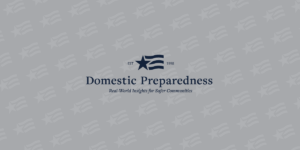

Reasonable Search – Or Another ‘Big Brother’ Situation?
Richard Schoeberl
November 23, 2011
Which is more important – the preservation of civil rights, or a substantial (but unprovable) gain in homeland security? That is the question that the U.S. Supreme Court must answer as it ponders the numerous complexities in the controversial case known as United States v. Jones.

Joplin & Irene Force Changes in Hospital Evac Plans
Theodore Tully
November 23, 2011
Article Out Loud Significant changes in hospital emergency planning have taken place since and largely because of Hurricane Katrina in 2005. Hospitals, along with nursing homes, have had their safety

Emerging Technology Enables Mass Patient Evacuations
Bruce Clements
November 16, 2011
From time to time, hospitals themselves can be dangerous to a patient’s health. That is particularly true when a patient is being transferred or evacuated, and even more so when a large number of patients are being evacuated at the same time. This is precisely why RFIDs, JPATS, and GPS devices are becoming more widely used.

Tracking and Locating Fire and Emergency Personnel
Christina Spoons
November 9, 2011
As firefighters and other emergency responders well know, disaster may be lurking just around the next corner. Or maybe in the burning room one floor below. Which is why breadcrumbs and a working PASS or any other reliable type of tracking-and-location system are so important in fighting fires. “The life you save may be your own” is not a joke; it is, rather, the first rule in survival.

The Impact of Tracking on Response Efforts
Omar Alkhalaf
November 2, 2011
From Post-It notes to high-tech wireless systems, the evidence – verified by a horrendous mass-casualty incident (MCI) in California and close calls in several other states – is clear: Rapid,
comprehensive, and well-controlled communications are key to the mounting and management of an effective response. Adherence to the National Incident Management System (NIMS) guidelines also helps, as does the promulgation of lessons learned from previous MCIs.

Identifying Biological Hazards as They Happen
Joseph Cahill
November 2, 2011
Start at the beginning … or even earlier. The process for handling potential mass-casualty incidents – particularly when biological hazards are involved – is critical when lowering exposure risk and abating the spread of a toxic agent: Develop comprehensive response plans as far in advance as possible, gather the supplies likely to be needed, and keep a constant track, in real time, of what has happened and is happening every step of the way.

